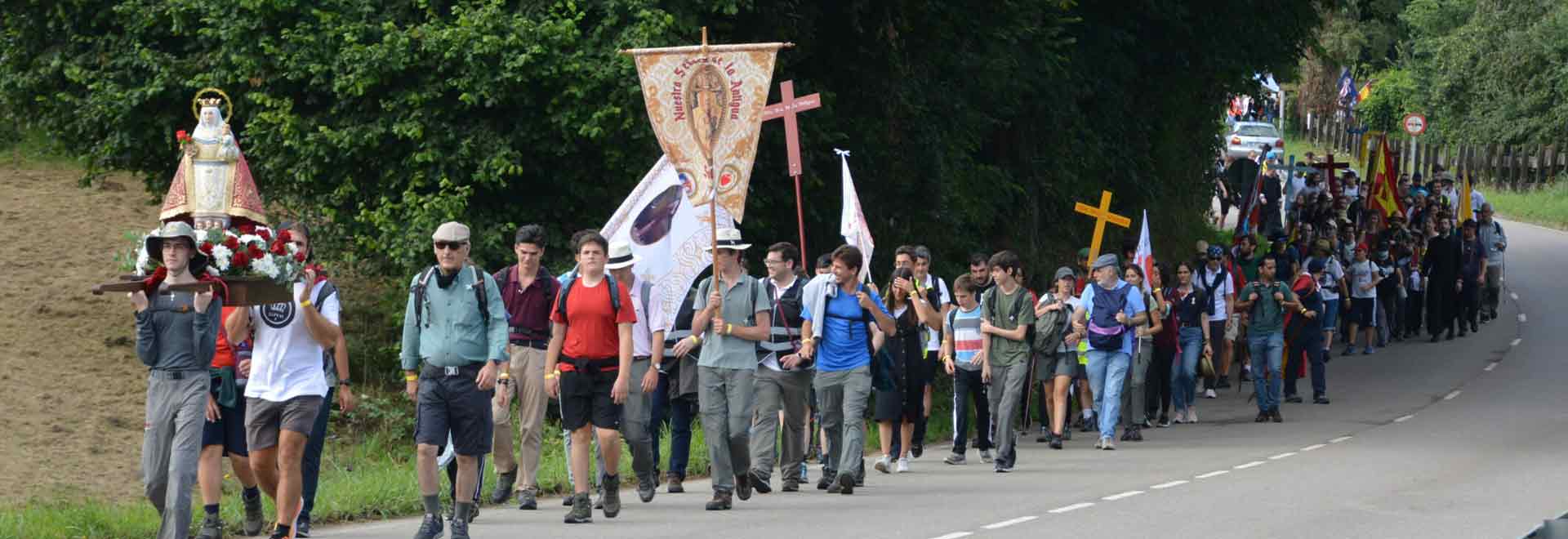It is about gaining new strength and impetus to bring and make present the grace of God when returning home.
Pilgrimages began in the Church before the peace granted by Emperor Constantine in 313, although they increased considerably when the Church enjoyed peace and freedom in the Roman Empire.
The oldest Christian pilgrimages were destined for Rome and the Holy Land as well as the tombs of the martyrs. The most famous of the pilgrims of that time was a Spanish woman named Egeria, who tells us how these pilgrimages were celebrated in the Holy Land in the 4th century.
Pilgrimages in honor of the Blessed Virgin Mary gained strength between the 5th and 7th centuries, mainly in Nazareth.
However, it was not until the 14th and 17th centuries that they reached their highest splendor and participation.
Today, the Church finds in Pope John Paul II the model for pilgrims. He reminds us that the Christian is first and foremost a pilgrim (GS 7) and that the Church itself is a pilgrim people (LG 8).
Pilgrimages offer us the possibility of reconnecting with our own Christian history, our transitory reality in this world. But the characteristic note is the festive and joyful form of these pilgrimages, which must remind us that our pilgrimage towards God must not, and cannot be painful or sad.
Thus, pilgrimages encourage the practice of Christian values, they stimulate an integral worship of God (seeing, hearing, singing, listening, touching, living together, etc.). They dispose us to be grateful and above all they remind us of our common subsistence and the need for a community salvation.
But the Church is not the only one that makes pilgrimages, this also happens among Jews, Muslims, Buddhists, etc., and the constant values are: purification, renewal and illumination.
For the Church, in addition to this, the pilgrimage fulfills a social meaning: to publicly manifest belonging to the Church and in this case the love and devotion to the Virgin Mary of Guadalupe.
The way of making a pilgrimage has varied over the centuries and with the places, but basically it has maintained its physiognomy. In ancient times it was done like this:
1. They met in a sacred place (Temple)
2. They listened to the Word of God.
3. They were instructed on the meaning of the pilgrimage.
4. They received the Blessing to leave.
Note.- With this it was intended to point out that it is precisely the Word of God that opens the way for us in life and that the church is always called and directed by God at all times and circumstances.
5. The pilgrims set out on the road, praying, singing, living together, getting to know each other.
Note.- It was not about going to find God, or the Virgin or the saints. God is always with us and the intercession of the Blessed Virgin Mary and the saints is constant. No, it was above all about going to a place where the pilgrim felt in a special way that providence, that everlasting intercession of God, of the Virgin, of the saints.
6. The pilgrimage, finally, does not end when arriving at the sanctuary or destination of the pilgrimage and participating in the liturgical or devotional acts, or signing the pilgrims’ book, or acquiring some souvenirs such as holy cards, medals, holy water, etc. It was and must still be about “recharging one’s energies” to gain new vigor and impetus to bring and make present the grace of God when returning home. To inspire and cheer up the members of the family, of the community who could not attend. It is above all about spreading the Kingdom of God, as Pope John Paul II asks: A new evangelization, new in its drive, new in its methods, new in its ardour.


